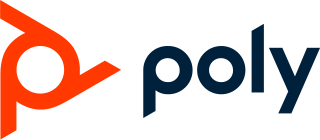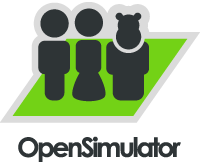Telepresence refers to a set of technologies which allow a person to feel as if they were present, to give the appearance or effect of being present via telerobotics, at a place other than their true location.
The Croquet Project is a software project that was intended to promote the continued development of the Croquet open-source software development kit to create and deliver collaborative multi-user online applications. Croquet is implemented in Squeak Smalltalk.

Microsoft NetMeeting is a discontinued VoIP and multi-point videoconferencing program offered by Microsoft. NetMeeting allows multiple clients to host and join a call that includes video and audio, text chat, application and desktop sharing, and file sharing. It was originally bundled with Internet Explorer 3 and then with Windows versions from Windows 95 to Windows Server 2003.

Videotelephony is the use of audio and video for real-time communication between people.
Tweak is a graphical user interface (GUI) layer written by Andreas Raab for the Squeak development environment, which in turn is an integrated development environment based on the Smalltalk-80 computer programming language. Tweak is an alternative to an earlier graphic user interface layer called Morphic. Development began in 2001.

Julian Lombardi is an American inventor, author, educator, and computer scientist known for his work with socio-computational systems, scalable virtual world technologies, and in the design and deployment of deeply collaborative virtual learning environments.
David Alan Smith is an American computer scientist, entrepreneur, and CTO of the Croquet Corporation. He has focused on interactive 3D and using 3D as a basis for new user environments and entertainment for over twenty years.

Poly Inc., formerly Polycom, is an American multinational corporation that develops video, voice and content collaboration and communication technology. Poly is a subsidiary of HP Inc.

OpenSimulator is an open-source server platform originally launched in 2007 for hosting virtual worlds and metaverse environments. It is largely compatible with the virtual world Second Life but full compatibility is not a design goal.
Open Wonderland is an open-source toolkit written in Java for creating collaborative 3D virtual worlds. Within those worlds, users can communicate with high-fidelity, immersive audio, share live desktop applications and documents and conduct real business. Open Wonderland is completely extensible; developers and graphic artists can extend its functionality to create entirely new worlds including adding new features to existing worlds.
The Cooperative Web or Co-Web refers to a browser-based platform that promises to replicate the power of face-to-face communications via web-touch without sacrificing the quality of human interactions. A Co-Web enabled situational application exploits direct high-definition video mixed with web based telepresence to further increase conversational productivity. The objective of the Cooperative Web is to enrich collaborative web meetings with a browser metaphor that supports simultaneous interactions between meeting participants.

Open Cobalt is a free and open-source software platform for constructing, accessing, and sharing virtual worlds both on local area networks or across the Internet, with no need for centralized servers.
The following outline is provided as an overview of and topical guide to software:
A networked music performance or network musical performance is a real-time interaction over a computer network that enables musicians in different locations to perform as if they were in the same room. These interactions can include performances, rehearsals, improvisation or jamming sessions, and situations for learning such as master classes. Participants may be connected by "high fidelity multichannel audio and video links" as well as MIDI data connections and specialized collaborative software tools. While not intended to be a replacement for traditional live stage performance, networked music performance supports musical interaction when co-presence is not possible and allows for novel forms of music expression. Remote audience members and possibly a conductor may also participate.
VenueGen is a browser-based web conferencing service created and marketed by The Venue Network. It is a 3D virtual meeting software that enables users to interact with each other using avatars. Users can host and attend meetings, conferences, and training with other colleagues and upload rich media into virtual meeting rooms for real-time collaboration.
The virtual world framework (VWF) is a means to connect robust 3D, immersive, entities with other entities, virtual worlds, content and users via web browsers. It provides the ability for client-server programs to be delivered in a lightweight manner via web browsers, and provides synchronization for multiple users to interact with common objects and environments. For example, using VWF, a developer can take video lesson plans, component objects and avatars and successfully insert them into an existing virtual or created landscape, interacting with the native objects and users via a VWF interface.

Hao Li is a computer scientist, innovator, and entrepreneur from Germany, working in the fields of computer graphics and computer vision. He is co-founder and CEO of Pinscreen, Inc, as well as associate professor of computer vision at the Mohamed Bin Zayed University of Artificial Intelligence (MBZUAI). He was previously a Distinguished Fellow at the University of California, Berkeley, an associate professor of computer science at the University of Southern California, and former director of the Vision and Graphics Lab at the USC Institute for Creative Technologies. He was also a visiting professor at Weta Digital and a research lead at Industrial Light & Magic / Lucasfilm.
Ghislaine Boddington is a British artist, curator, presenter and director specialising in body responsive technologies, immersive experiences and collective embodiment, pioneering it as 'hyper-enhancement of the senses' and 'hyper-embodiment' since the late 80s.






